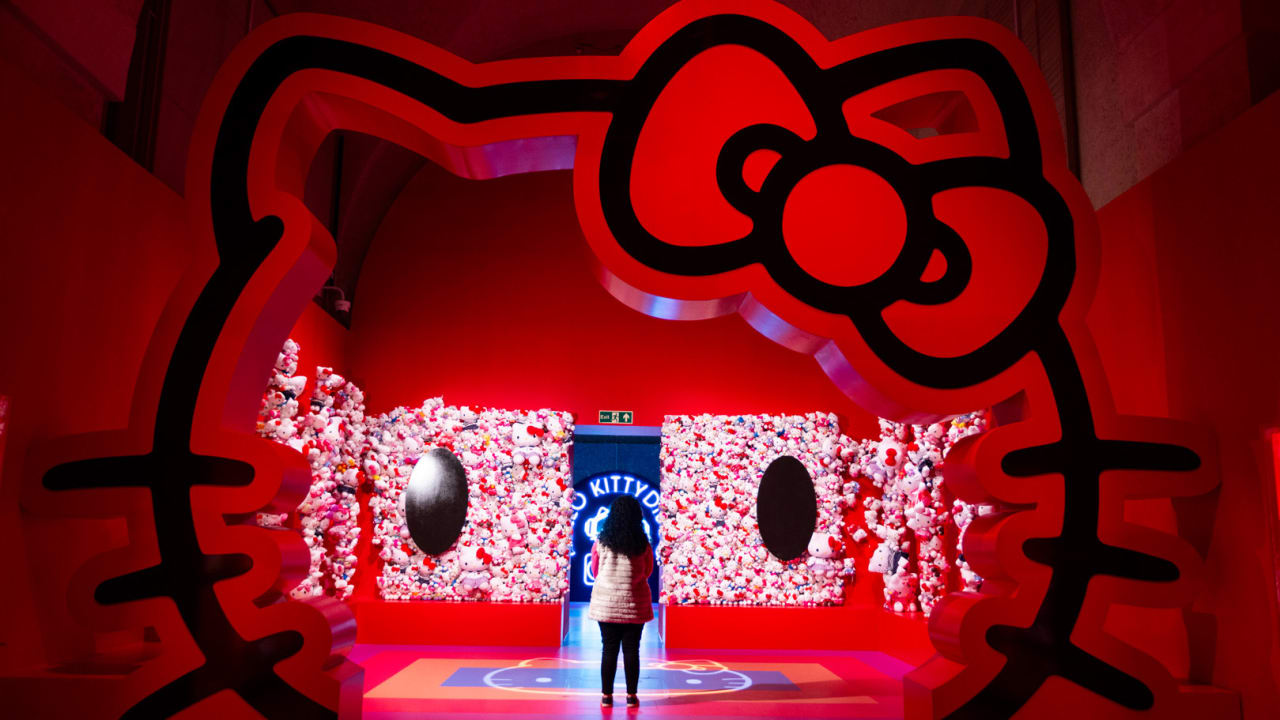Were cats always this cute?
A new exhibition at London’s Somerset House attempts an answer by unpacking the rise and stay of cuteness in contemporary culture. Simply titled, Cute, the exhibition showcases hundreds of plushies, furbies, care robots, Pokemon cards, robot puppies, Tamagotchis, dollhouses, kawaii figurines—plus, a cornucopia of cats. And it culminates in a Hello Kitty installation to mark the brand’s 50th anniversary.

[Photo: David Parry/PA Wire/courtesy Somerset House]

Works by Louis Wain [Photo: David Parry/PA Wire/courtesy Somerset House]
The concept of “cute” predates Hello Kitty by about 1,000 years. One of the earliest descriptions of cuteness dates back to 11th-century Japan when Japanese writer and court lady Sei Shōnagon wrote a collection of essays about the kinds of small, charming details of life that kawaii culture would eventually promote.

Louis Wain, Ginger Cat, 1931 [Image: courtesy of Bethlem Museum of the Mind/Somerset House]
Of course, it would take hundreds of years for the cult of cute to go mainstream. For Catterall, the upswing began in the 19th century, with the advent of mass production techniques, which allowed images to be reproduced quickly and cheaply.
Around the same time, two things happened: Many animals ceased to be “animals of labor” and became “animals of love,” otherwise known as pets; and child mortality rates began to decline. All of a sudden, both cats and babies, neither of which were particularly endearing before, became the epitome of cute.

Womenswear by Ashley Williams [Photo: David Parry/PA Wire/courtesy Somerset House]
Fast forward 200 years, and the internet propelled cuteness into a whole other stratosphere, stuffed with cute emojis, cute memes, and cute TikTok filters. Today, “cute culture” has become a global phenomenon, and yet, it lacks a global aesthetic. “On a very basic level, different cultures find different animals cute,” explains Catterall. “In the U.K., cuteness is considered very childish; in Japan, it’s not, and a lot of grown-up people accept cuteness in their lives,” she adds.

Hypersonic works on display [Photo: David Parry/PA Wire/courtesy Somerset House]
Of course, there are the tropes: When something is cute, it is generally fluffy, doe-eyed, and much like the exhibition’s very own mascot, dressed in rainbows. Several studies have linked our attraction to babies or animals with wide eyes and chubby cheeks to our innate desire to protect them. But the spectrum of cuteness is much broader. A cute animal can be sad (Eeyore); it can be ugly (E.T.); it can even be violent (Gloomy Bear).

Hello Love by Hattie Stewart [Photo: David Parry/PA Wire/courtesy Somerset House]
Sometimes, cuteness is used to invoke peace—like Hello Kitty traffic cones meant to slow down drivers at Japanese road construction sites. Sometimes, it’s been used to disguise a decidedly uncute message—like the pill-shaped plush toys the Sackler family-owned Purdue Pharma used as a foil in marketing OxyContin, its opioid painkiller at the center of the deadly drug-overdose epidemic in this country.

[Photo: David Parry/PA Wire/courtesy Somerset House]
Cuteness and consumerism are so closely related, says Catterall, that brands have been known to design plushies that look sad so we would buy them to cheer them up. But for Catterall, the true power of cuteness is that it’s neither positive nor negative. It is a vessel for both good and bad, and therefore, can break down binaries. “Most people, if they come thinking that cute is simply a commodity aesthetic,” she says, “I hope we show them that it’s this incredibly ambiguous and uncanny and unsettling thing that can also be liberating and empowering.”



.png#keepProtocol)




.png#keepProtocol)
More Stories
The Key to Boosting Retention
Kim Jong Un Unveils Ambitious ‘Regional Development Policy’ To Modernize Rural North Korea Amid Food Shortages
Industry Leader Revolutionizes Business Financing Through Credit Stacking